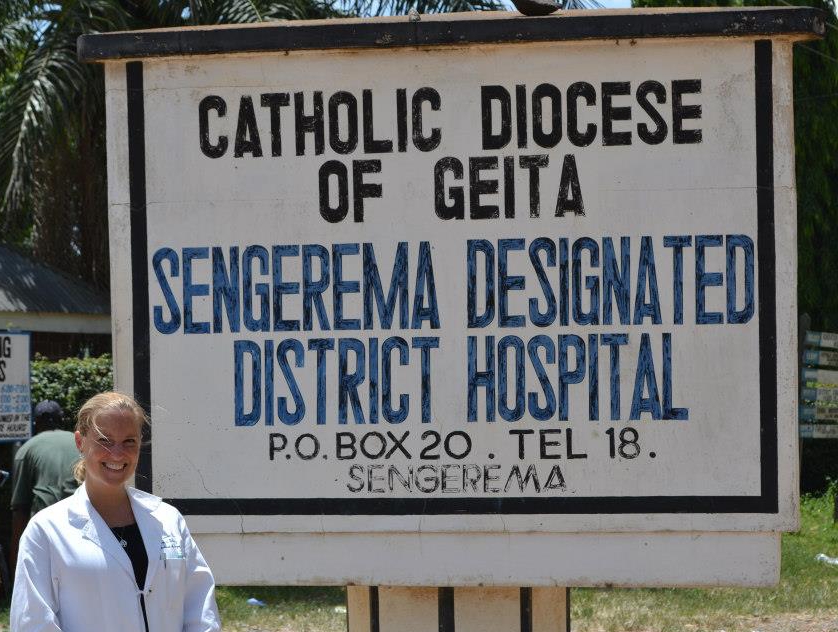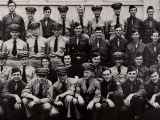A Day in the Life of Dr. C. Anne Morrison: Experiences in rural Tanzania
Dr. C. Anne Morrison is an instructor at the Michael E. DeBakey Department of Surgery and a physician in the BCM Global Health Corps. Get a glimpse into a typical day in her life.
For the last 15 months I have been teaching and practicing at Sengerema Designated District Hospital, a 250-bed hospital in rural Tanzania. The hospital is underfunded; nevertheless, it serves about half a million people and is a training site for nursing students, clinical officers, and assistant medical officers.
I am one of three physicians in the hospital and was recruited to provide specialized surgical care that was not previously available. My practice at Sengerema is quite different from what I experienced during my general surgery residency at Baylor College of Medicine.
Mornings
The roosters usually start around 5 a.m. when it is still pitch black outside. We are in the “short rains” season now, so we only get one or two short, heavy showers per day. Even though we are practically on the equator, we are at 4,500-foot elevation, which means cool nights and mornings and scorching hot afternoons.
After a quick breakfast, I go straight to morning report at 7 a.m. My house is located on the hospital property, so it’s a short walk.
Morning report is for reviewing any new patients who were admitted by the clinical officer overnight, as well as any “significant” cases overnight, such as unexpected deaths or emergency procedures. All of the clinical officers, assistant medical officers (AMO), and AMO students are supposed to be present at morning report, as well as me and Dr. Sr. Marie Jose—a 60-year-old nun and doctor who serves as the physician-in-charge of the hospital.
We discuss cases, in English and Swahili, from all wards in the hospital.
For example, last night, there were four children admitted with severe malaria, one child with severe diarrheal disease, an HIV+ male with pneumonia, a man with incarcerated inguinal hernia, a teenager involved in a motorcycle accident, and two women with incomplete miscarriages.
After morning report, I round on the surgical patients in the intensive care unit. I do teaching rounds with the AMO students in the male and female surgical wards from 8:30-11 a.m.
Surgery
I go the operating room (or “theatre” as they call it here) around noon. I scrub with one or two AMO students per case, depending on how many clean gowns we have.
Today, I did the incarcerated hernia in the man admitted last night, as well as an elective hernia, a hydrocele and an incision and drainage of a giant dental abscess.
As I was about to leave the OR, a new patient arrived with sigmoid volvulus, a segment of his bowels was twisted, so I did that case as well.
We perform these surgeries without things that would be unfathomable to run out of at a hospital in the U.S.: Foley catheters (a thin tube), urinary bags, IV tubing, IV fluids, common antibiotics, lubricant jelly, tape, gauze, IV syringes, anesthetics. Some things have never been in stock at all.
If a patient needs a chest tube, I have to improvise with a nasogastric tube (NGT) and IV tubing and an empty glass bottle. We have only one suction machine, which has to stay in the OR, so no suction is available on the wards or even in the ICU. If a patient needs a surgical drain, I have to use whatever is available—a foley, or NGT, or IV tubing, or sometimes cutting off the fingers of a sterile glove to use as a drain when nothing else is around.
We reuse sterile gowns and drapes. Many of the sterile instruments are used even before they are donated to us, so the vast majority of them are rusty, blunt, or broken.
It is practically impossible to buy sterile gloves in any size other than 7.5 or 8 in Tanzania, so all of my size 6 gloves are worth more than gold to me. I rely on visitors or shipments from the US to replenish my supply, but often run out and have to make due with gloves that are too large for me.
One of my former attendings at Baylor used to say, “Laparotomy is like the ultimate CT scan,” and nowhere that rings truer than here in rural Africa where there is no CT scan (computed tomography).
A laparotomy is an operation involving a large incision through the abdomen to gain access into the abdominal cavity, and in eight of every 10 of my laparotomies I don’t have any imaging data – an X-ray or an ultrasound – that would give me an idea of what my patient’s problem is.
Urgent pre-operative labs are limited to hemoglobin, cross-match, and rapid-malaria only. CBC (complete blood count), HIV, typhoid antibody, creatinine, microscopic stool, urine, and blood slides are available, but may take hours to days for the results. We cannot check any electrolytes, liver function, pregnancy, or any other lab tests.
Afternoons and evenings
Surgeries usually go until 3 or 4 p.m. In the afternoon, I pop into the children’s ward to review post-op cases and non-operative “surgical cases,” such as femur fractures, burn or infected wounds. Then, back to the surgical wards to review any pending results or new admissions before going home.
If I’m home before dark (7 p.m.), I might go for a jog, otherwise, I might hang out on the back porch with my husband before dinner and maybe eat a traditional Tanzanian potato omelet and goat-kabobs.
We don’t have a television or very good internet at home, so evening entertainment is either reading a book or watching a DVD on my computer. I get called back into the hospital about two to three nights per week; otherwise, I tuck in my mosquito net and go to bed until the roosters wake me up in the morning.
Interested in donating to BIPAI? See information on giving and read more about the Global Health Corps.
–C. Anne Morrison, M.D., instructor, surgery, Baylor College of Medicine
–Ana María Rodríguez, Ph.D., senior medical editor, surgery, Baylor College of Medicine




Amazing, heartbreaking, and super-human efforts! Our thanks and congratulations to you and your team for being your kind, giving, and hardworking selves. Your piece was extremely well- written and a real eye- opener.
Much, much love,
Veronica and John